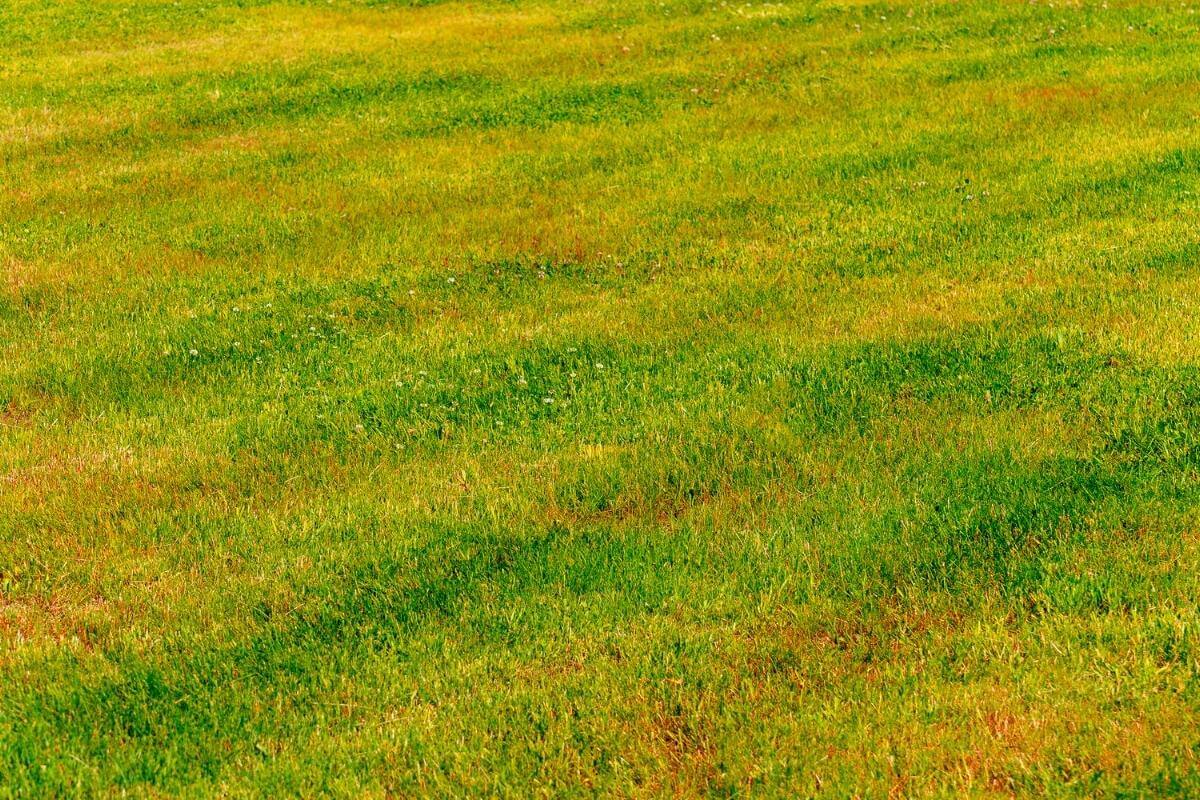Sowing grass is challenging, but the outcome is admirable.
So, we understand that you might look at your newly seeded lawn every day and hope to see new blades of appealing grass sprouting.
Unfortunately, despite your best efforts, you may witness your freshly sown grass turning yellow.
And several reasons contribute to that, which we’ll get into.
The most common reason for your newly sown grass turning yellow is the lack or incorrect watering. Lack of moisture is the main cause. Also, sunburn from watering at the wrong time of day can cause it to turn yellow.
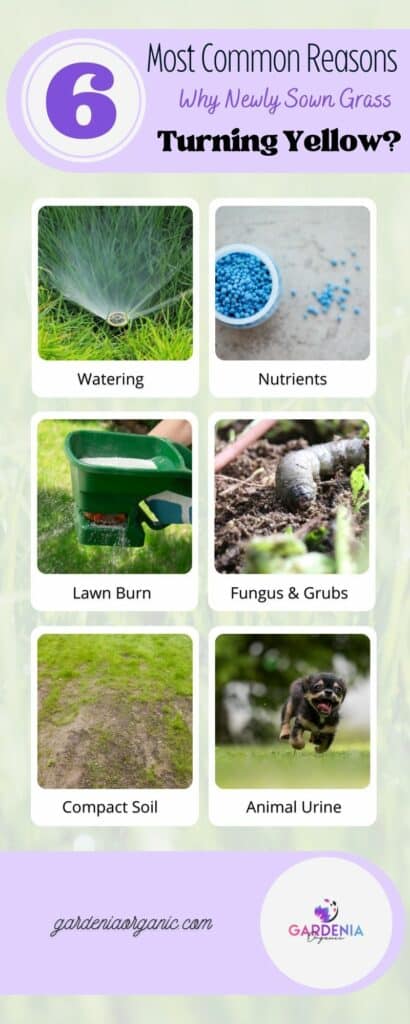
1. Insufficient or Excessive Lawn Watering
Failure to water your lawn as frequently as recommended may weaken your grass and cause yellowing and drying up.
You must water your lawn twice a day in the morning and the evening under normal weather conditions to see a positive impact.
However, when you live in incredibly dry places, you should water your lawn three or more times to keep your grass vibrant and your soil moist.
Additionally, you’ll need to reduce the amount of watering after your grass is fully grown. After the lawn is fully grown you can then water your lawn every two to five days based on the season.
Overwatering also impedes the root development of your grass, leading to yellowing.
Excessive water limits the availability of oxygen and causes waterlogging.
As a Result: Your grass’ roots won’t develop properly due to insufficient uptake of water and nutrients. Overwatering will result in your newly sown grass turning yellow.
2. Imbalanced Soil Nutrients
If your soil nutrients are imbalanced, you may notice your newly sown grass turning yellow.
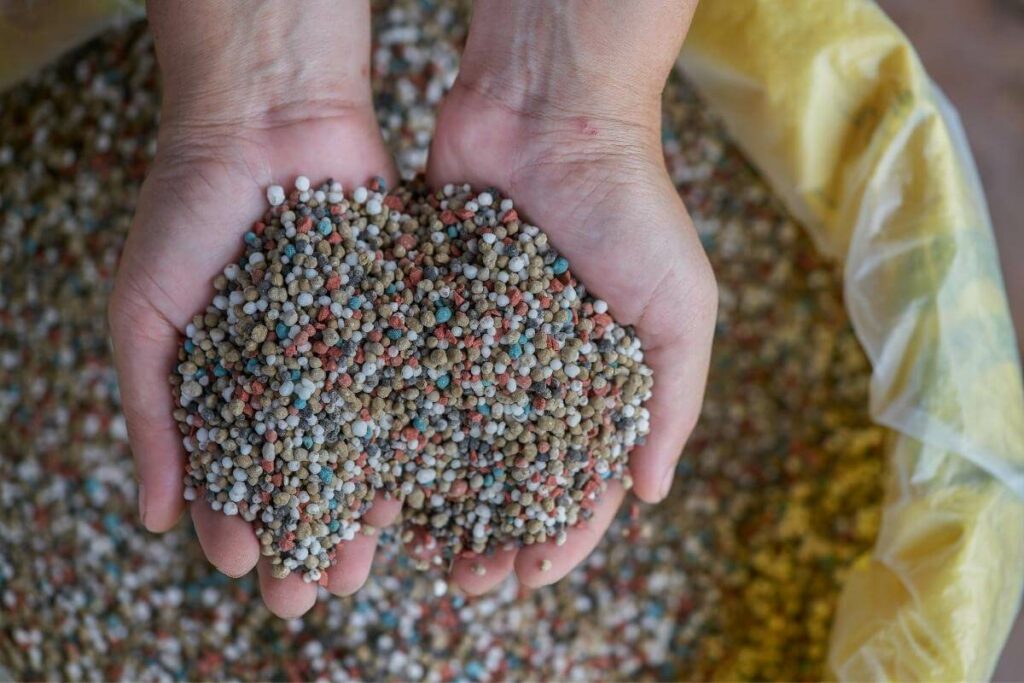
That’s because high phosphorus levels, iron deficiencies, and insufficient nitrogen can cause yellowing and stunted grass growth.
Signs and a Solution for Nutrient Imbalance
Here are some ways to tell your soil’s nutrients are imbalance:
- Grass blades browning and yellowing at the tips
- Grass growing flimsy and does so slowly
- Unprecedented wilting
- Grass turning light green instead of having a deep green color
Fortunately, you can combat this by using nitrogenous and phosphoric fertilizers like the NPK.
As you apply fertilizers on your lawn, do so evenly so that no parts of your lawn suffer from nutrient deficiency.
And this way, you can avoid yellow nutrient-deficient streaks on the areas of your lawn that you unevenly fertilize.
3. Lawn Burn
Many factors can cause a lawn burn.
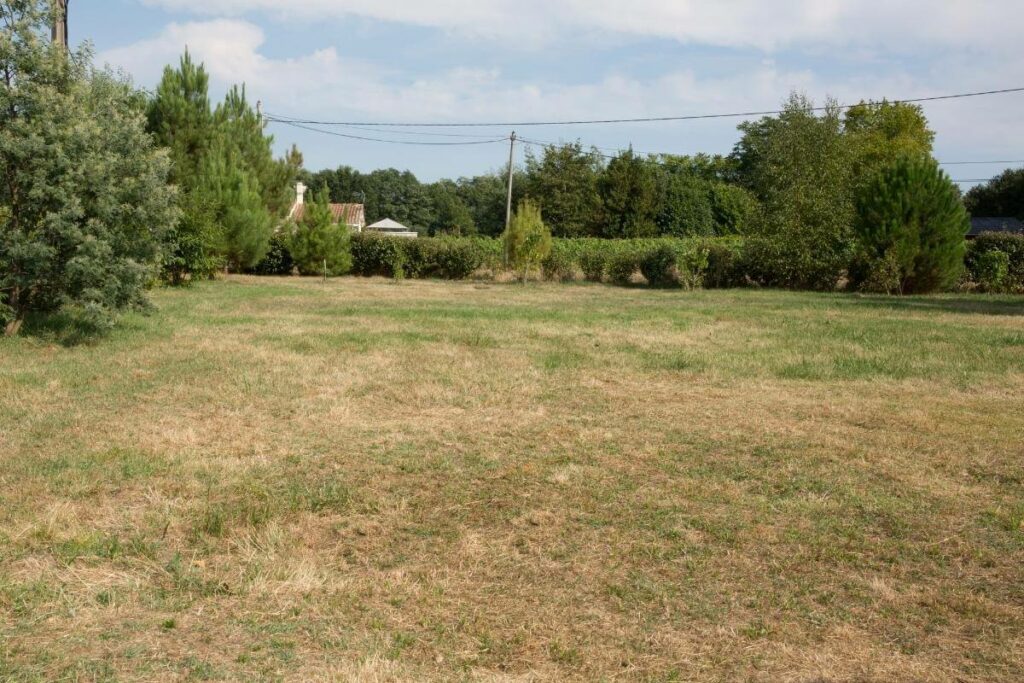
For example, overfertilization with synthetic fertilizers results in excess salts building up in the soil, bringing about a fertilizer burn, turning your newly sown grass yellow, brown, or drying it up.
Additionally, harsh insecticides may damage your freshly sown grass blades, causing them to turn yellow and wilt.
Signs and Solutions for Lawn Burn
- Leaf-blades turning yellow at the base
- The slow growth of your grass
- Grass blades browning at the top
- Fertilizer crusts on your soil surface
- Endless lawn diseases, especially the yellow grass lawn disease
Should this happen, you can reduce the application of fertilizers and give your soil enough time to recover.
To avoid improper insecticide use, you should always read your manufacturer’s instructions and use accurate measurements when applying harsh chemicals on your lawn.
Additionally, watering your lawn with a lot of water frequently can help you combat a lawn burn.
4. Grass Fungus and Lawn Grubs
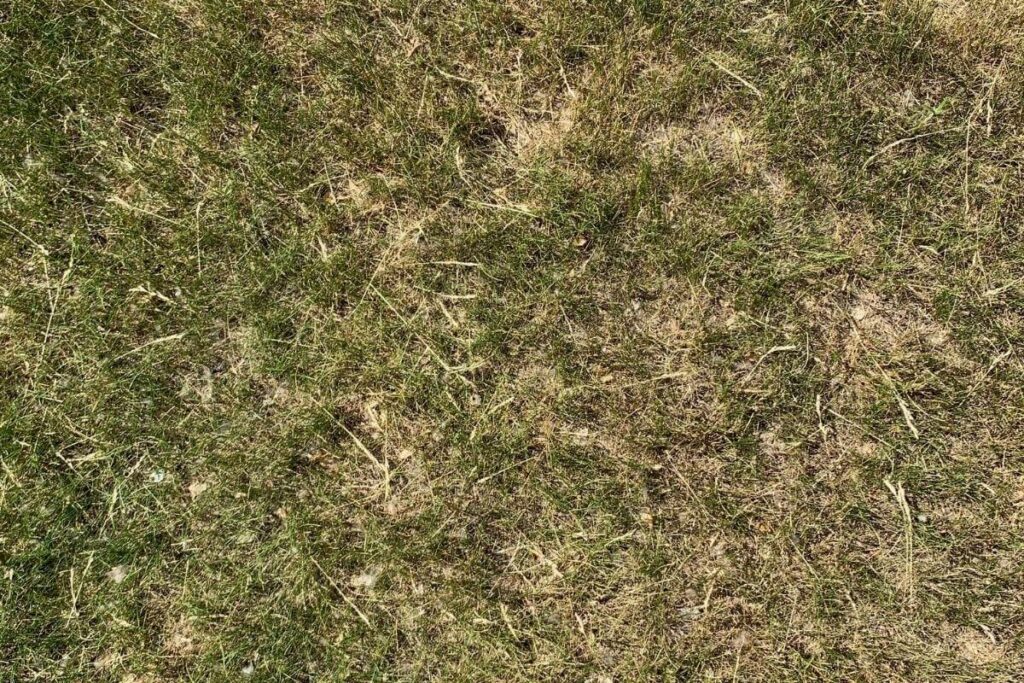
Common lawn grubs whose infestation may turn your newly sown grass yellow include:
- The Cranberry Girdler Larvae: These pests eat the roots of your grass, ultimately causing your grass to turn yellow and dry up.
- Billbugs: These bugs are hazardous and eat the stems and roots of your grass. They can create yellow and brown patches on your grass. And the white grubs, like Billbugs, eat your grass’ roots, hence the early wilting and brown patches on your grass.
- The Lawn Fungi: Necrotic fungi, and Necrotic ring are common fungi that cause your grass to turn yellow. Ascochyta also creates yellow patches on your grass, especially when sweltering weather precedes a rainy season. Therefore, you should inspect your grass for these fungi if you don’t find any grubs on your lawn.
Furthermore, you can prevent Ascochyta and Necrotic ring by constantly aerating your soil and doing less mowing to your lawn as long as the fungi are still present.
Your Choice: Using the appropriate application of insecticides and fertilizers can help you eliminate lawn grubs and lawn fungus.
5. Compact Soil
Did you know that soil that’s too compact may cause your newly sown grass to turn yellow?
When the underneath soil is too tight, your grass’ roots struggle to penetrate deeper into the ground.

Consequently, your grass weakens, turning yellow, and ultimately dries up if you don’t address the soil’s condition.
Signs and Solutions for a Compact Soil
- The complex grey soil is too closely packed
- Water quickly runs off the elevated parts of your lawn
- Water stagnates at the low ends of your lawn
If you detect any of these signs on your lawn, you must reduce overwatering and minimize foot traffic on your lawn.
Also, get your lawn thatch layer to one inch thick to encourage healthy grass.
Furthermore, aeration can help you loosen up your compact soil.
6. Animal Urine
Your dog or the neighbor’s dog could be urinating on your lawn, causing the yellowing.
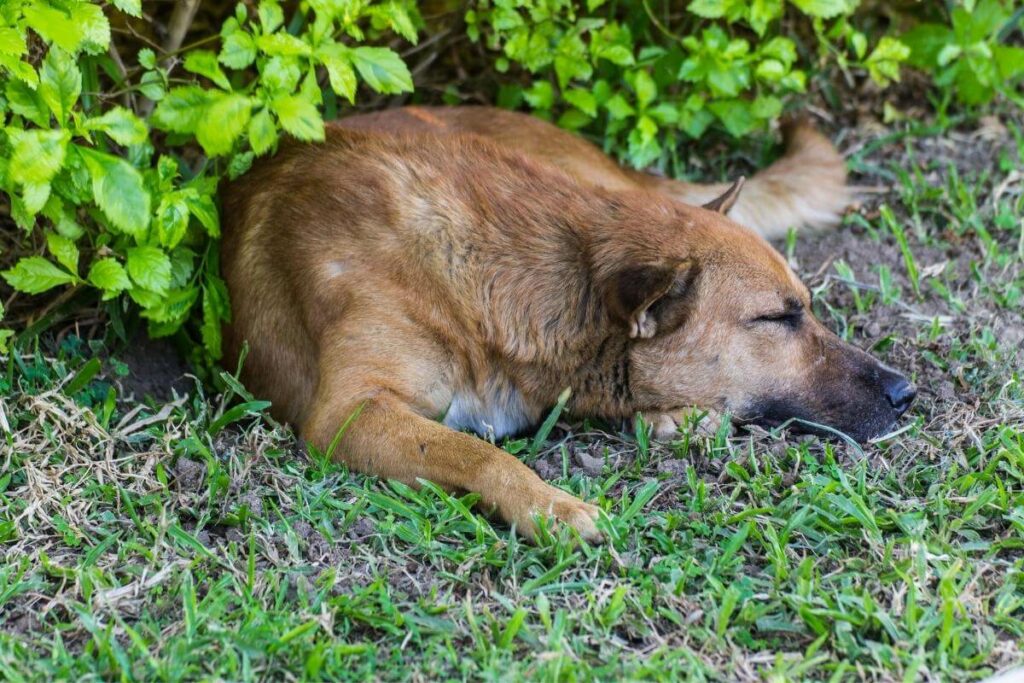
Most animal urine has a higher concentration of nitrogen, which can burn your lawn and cause your grass to turn yellow.
This will likely happen if the urine is dumped on particular areas of the lawn repeatedly.
To overcome this, you should train your pet to urinate away from the lawn.
Alternatively: You can spray the lawn area that has animal urine with baking soda as soon as you discover the patches showing up.
Final Thoughts
Witnessing your newly sown grass turning yellow is disappointing.
However, it still commonly happens because of the various factors mentioned above. Be sure to look for the previously mentioned signs to understand the route of the problem.
Then, using our solutions, you can handle your situation at hand. We truly hope that this helps you achieve a great-looking lawn that you can be proud of.
Good luck, and may the grass always be greener on your side!
Useful to Read
- How to Improve Grass on Clay Soil in 4 Easy Ways
- Starting a Lawn Care Business? 50 Lawn Care Business Names
- Is it Worth Paying for Lawn Care?
